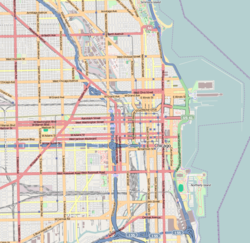
Womanhouse was a feminist art installation and performance space organized by Judy Chicago and Miriam Schapiro, co-founders of the California Institute of the Arts (CalArts) Feminist Art Program and was the first public exhibition of Art centered upon female empowerment. Chicago, Schapiro, their students, and women artists from the local community, including Faith Wilding, participated. Chicago and Schapiro encouraged their students to use consciousness-raising techniques to generate the content of the exhibition. Together, the students and professors worked to build an environment where women's conventional social roles could be shown, exaggerated, and subverted.

An artist-run space or artist-run centre (Canada) is a gallery or other facility operated or directed by artists, frequently circumventing the structures of public art centers, museums, or commercial galleries and allowing for a more experimental program. An artist-run initiative (ARI) is any project run by artists, including sound or visual artists, to present their and others' projects. They might approximate a traditional art gallery space in appearance or function, or they may take a markedly different approach, limited only by the artist's understanding of the term. "Artist-run initiatives" is an umbrella name for many types of artist-generated activity.
The Woman's Building was a non-profit arts and education center located in Los Angeles, California. The Woman's Building focused on feminist art and served as a venue for the women's movement and was spearheaded by artist Judy Chicago, graphic designer Sheila Levrant de Bretteville and art historian Arlene Raven. The center was open from 1973 until 1991. During its existence, the Los Angeles Times called the Woman's Building a "feminist mecca."

A.I.R. Gallery is the first all female artists cooperative gallery in the United States. It was founded in 1972 with the objective of providing a professional and permanent exhibition space for women artists during a time in which the works shown at commercial galleries in New York City were almost exclusively by male artists. A.I.R. is a not-for-profit, self-underwritten arts organization, with a board of directors made up of its New York based artists. The gallery was originally located in SoHo at 97 Wooster Street, and was located on 111 Front Street in the DUMBO neighborhood of Brooklyn until 2015. In May 2015, A.I.R. Gallery moved to its current location at 155 Plymouth St, Brooklyn, NY 11201.

The feminist art movement in the United States began in the early 1970s and sought to promote the study, creation, understanding and promotion of women's art. First-generation feminist artists include Judy Chicago, Miriam Schapiro, Suzanne Lacy, Judith Bernstein, Sheila de Bretteville, Mary Beth Edelson, Carolee Schneeman, Rachel Rosenthal, and many other women. They were part of the Feminist art movement in the United States in the early 1970s to develop feminist writing and art. The movement spread quickly through museum protests in both New York and Los Angeles, via an early network called W.E.B. that disseminated news of feminist art activities from 1971 to 1973 in a nationally circulated newsletter, and at conferences such as the West Coast Women's Artists Conference held at California Institute of the Arts and the Conference of Women in the Visual Arts, at the Corcoran School of Art in Washington, D.C..
SOHO20 Artists, Inc., known as SOHO20 Gallery, was founded in 1973 by a group of women artists intent on achieving professional excellence in an industry where there was a gross lack of opportunities for women to succeed. SOHO20 was one of the first galleries in Manhattan to showcase the work of an all-woman membership and most of the members joined the organization as emerging artists. These artists were provided with exhibition opportunities that they could not find elsewhere.
An alternative exhibition space is a space other than a traditional commercial venue used for the public exhibition of artwork. Often comprising a place converted from another use, such as a store front, warehouse, or factory loft, it is then made into a display or performance space for use by an individual or group of artists. According to art advisor Allan Schwartzman "alternative spaces were the center of American artistic life in the '70s."
Vera Klement is an American artist, and Professor Emerita at the University of Chicago. She was a 1981 Guggenheim Fellow.
Mary Beth Edelson was an American artist and pioneer of the feminist art movement, deemed one of the notable "first-generation feminist artists." Edelson was a printmaker, book artist, collage artist, painter, photographer, performance artist, and author. Her works have been shown at the Museum of Modern Art, the Smithsonian American Art Museum, and the Museum of Contemporary Art in Chicago.
New York Feminist Art Institute (NYFAI) was founded in 1979 by women artists, educators and professionals. NYFAI offered workshops and classes, held performances and exhibitions and special events that contributed to the political and cultural import of the women's movement at the time. The women's art school focused on self-development and discovery as well as art. Nancy Azara introduced "visual diaries" to artists to draw and paint images that arose from consciousness-raising classes and their personal lives. In the first half of the 1980s the school was named the Women's Center for Learning and it expanded its artistic and academic programs. Ceres Gallery was opened in 1985 after the school moved to TriBeCa and, like the school, it catered to women artists. NYFAI participated in protests to increase women's art shown at the Museum of Modern Art, The Whitney Museum of American Art and other museums. It held exhibitions and workshops and provided rental and studio space for women artists. Unable to secure sufficient funding to continue its operations, NYFAI closed in 1990. Ceres Gallery moved to SoHo and then to Chelsea and remained a gallery for women's art. However, a group continues to meet called (RE)PRESENT, a series of intergenerational dialogues at a NYC gallery to encourage discussion across generations about contemporary issues for women in the arts. It is open to all.

Phyllis Bramson is an American artist, based in Chicago and known for "richly ornamental, excessive and decadent" paintings described as walking a tightrope between "edginess and eroticism." She combines eclectic influences, such as kitsch culture, Rococo art and Orientalism, in juxtapositions of fantastical figures, decorative patterns and objects, and pastoral landscapes that affirm the pleasures and follies of romantic desire, imagination and looking. Bramson shares tendencies with the Chicago Imagists and broader Chicago tradition of surreal representation in her use of expressionist figuration, vernacular culture, bright color, and sexual imagery. Curator Lynne Warren wrote of her 30-year retrospective at the Chicago Cultural Center, "Bramson passionately paints from her center, so uniquely shaped in her formative years […] her lovely colors, fluttery, vignette compositions, and flowery and cartoony imagery create works that are really like no one else's. Writer Miranda McClintic said that Bramson's works "incorporate the passionate complexity of eastern mythology, the sexual innuendos of soap operas and sometimes the happy endings of cartoons." Bramson's work has been exhibited in exhibitions and surveys at the Museum of Contemporary Art, Chicago (MCA), the Art Institute of Chicago, the Smithsonian Institution, and Corcoran Gallery of Art. In more than forty one-person exhibitions, she has shown at the New Museum, Fort Wayne Museum of Art, Boulder Art Museum, University of West Virginia Museum, and numerous galleries. She has been widely reviewed and recognized with John S. Guggenheim and Rockefeller foundation grants and the Anonymous Was A Woman Award, among others. She was one of the founding members of the early women's art collaborative Artemisia Gallery and a long-time professor at the School of Art and Design at the University of Illinois at Chicago, until retiring in 2007.
Women's Art Resources of Minnesota (WARM) is a women's art organization based in the U.S. state of Minnesota. It was founded in 1976 as Women's Art Registry of Minnesota, a feminist artist collective. The organization ran the influential WARM Gallery in downtown Minneapolis from 1976 to 1991.
Susan Michod is an American feminist painter who has been at the forefront of the Pattern and Decoration movement since 1969. Her work "consists of monumental paintings [which are] thickly painted, torn, collaged, spattered, sponged, sprinkled with glitter and infused with a spirit of love of nature and art," the art critic Sue Taylor has written.
Women Artists in Revolution (WAR) was a New York City-based collective of American women artists and activists that formed in 1969. They seceded from the male-dominated Art Workers' Coalition (AWC), prompted by the Whitney Museum of American Art's 1969 Annual, which included only eight women out of the 143 featured artists shown.

Fern Shaffer is an American painter, performance artist, lecturer and environmental advocate. Her work arose in conjunction with an emerging Ecofeminism movement that brought together environmentalism, feminist values and spirituality to address shared concern for the Earth and all forms of life. She first gained widespread recognition for a four-part, shamanistic performance cycle, created in collaboration with photographer Othello Anderson in 1985. Writer and critic Suzi Gablik praised their work for its rejection of the technocratic, rationalizing mindset of modernity, in favor of communion with magic, the mysterious and primordial, and the soul. Gablik featured Shaffer's Winter Solstice (1985) as the cover art for her influential book, The Reenchantment of Art, and wrote that the ritual opened "a lost sense of oneness with nature and an acute awareness of ecosystem" that offered "a possible basis for reharmonizing our out-of-balance relationship with nature."
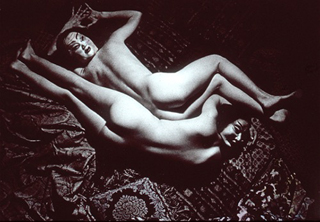
Carole Harmel is an American artist and photographer, who gained recognition for her provocative images of nudes in the 1970s and 1980s and still lifes combining photography with short narratives, wordplay and mixed media. Fundamental to Harmel's work is a questioning of reality and photographic conventions, a penchant for surrealism, and humor. The New Art Examiner described her nudes as having a "startling, queasy impact," "rich in ambiguity, discomforting in content." About her still lifes, critic Michael Weinstein wrote, "sophisticated academic criticism is fused with love of color and visual form to create images at once conceptually engaging and perceptually arresting."
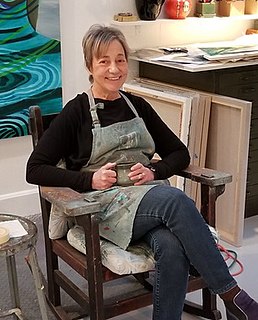
Barbara Grad is an American artist and educator, known for abstract, fractured landscape paintings, which combine organic and geometric forms, colliding planes and patterns, and multiple perspectives. Her work's themes include the instability of experience, the ephemerality of nature, and the complexity of navigating cultural environments in flux. While best known as a painter, Grad also produces drawings, prints, mixed-media works and artist books. She has exhibited in venues including the Art Institute of Chicago, Kemper Museum of Contemporary Art, Danforth Art, Rose Art Museum, Indianapolis Museum of Art and A.I.R., and been reviewed in publications, including Artforum, Arts Magazine and ARTnews. Grad co-founded Artemisia Gallery, one the country's first women-artist collectives, in Chicago in 1973. She has been an educator for over four decades, most notably at the Massachusetts College of Art and Design. Grad has been based in the Boston area since 1987.
ARC Gallery is an alternative exhibition space in Chicago, Illinois. Opening in 1973, it was one of the first women artists’ cooperatives in the Midwest along with Artemisia Gallery. ARC stands for Artists, Residents, Chicago and is one of the longest running women’s cooperative galleries in the country. The original members, recent art school graduates, banded together because they found few female mentors and exhibition opportunities. Through ARC, the members were able to promote their own artwork, feature solo and group exhibitions by many artists from across the county, and create discourse around feminism, art, theory, and practice. In 1979, ARC founded RAWspace, a raw part of the gallery dedicated to exhibiting installation work by visiting artists, selected by ARC members. RAWspace was one of the pioneering spaces in Chicago for the exhibition of installation work.
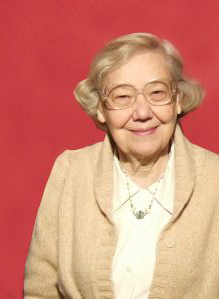
Alice Shaddle Baum was an American sculptor, collage artist, and founding member of the Artemisia Gallery in Chicago.
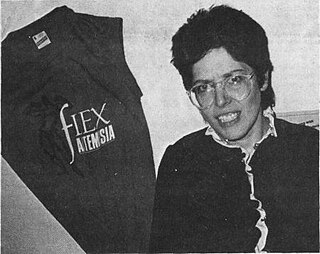
Nicole Ferentz is an American cartoonist, illustrator, graphic designer, and teacher. Her works cover feminist themes, lesbian themes, and themes of illness. Her comics have been featured in prominent queer comics like Gay Comics.
